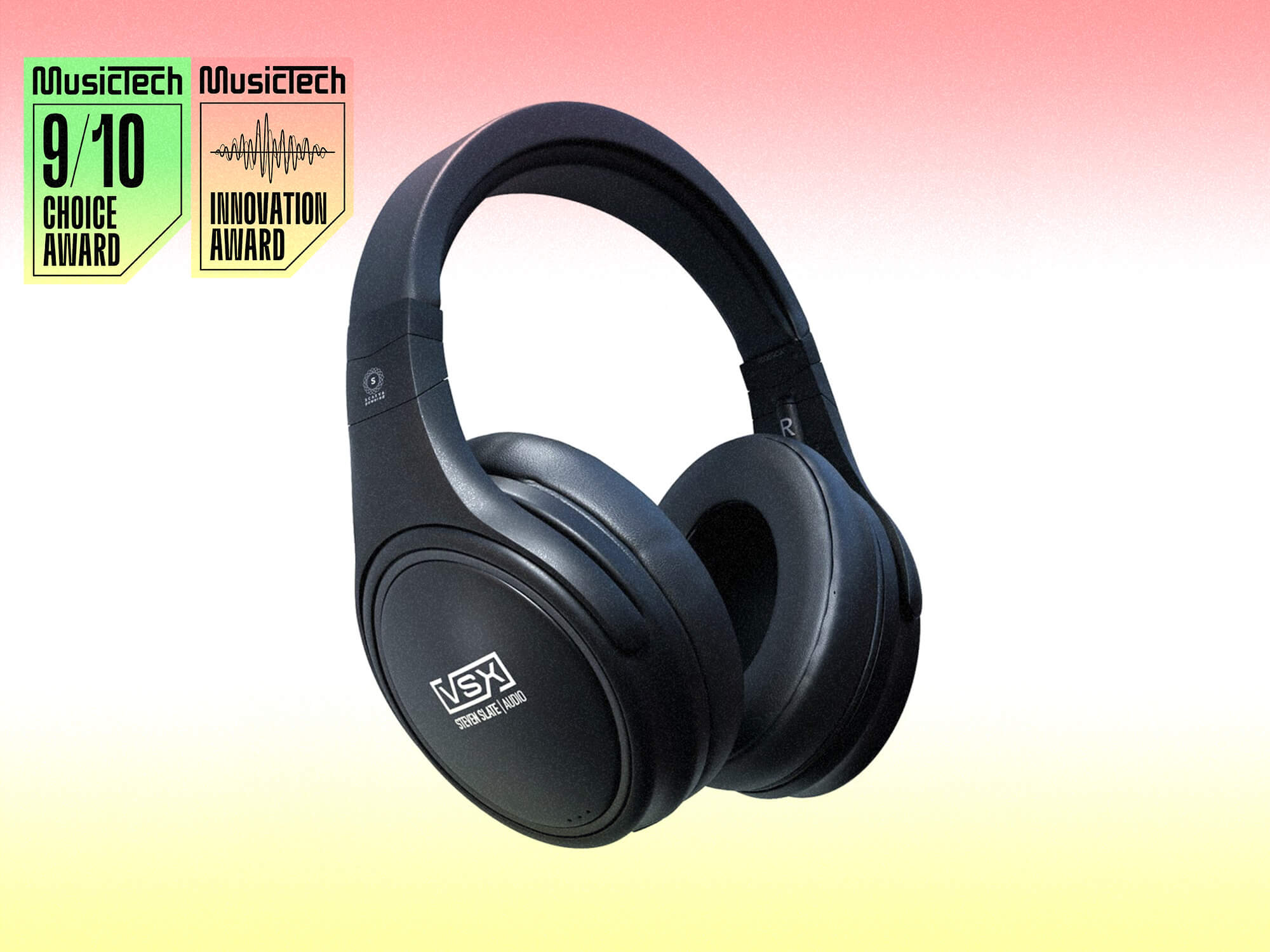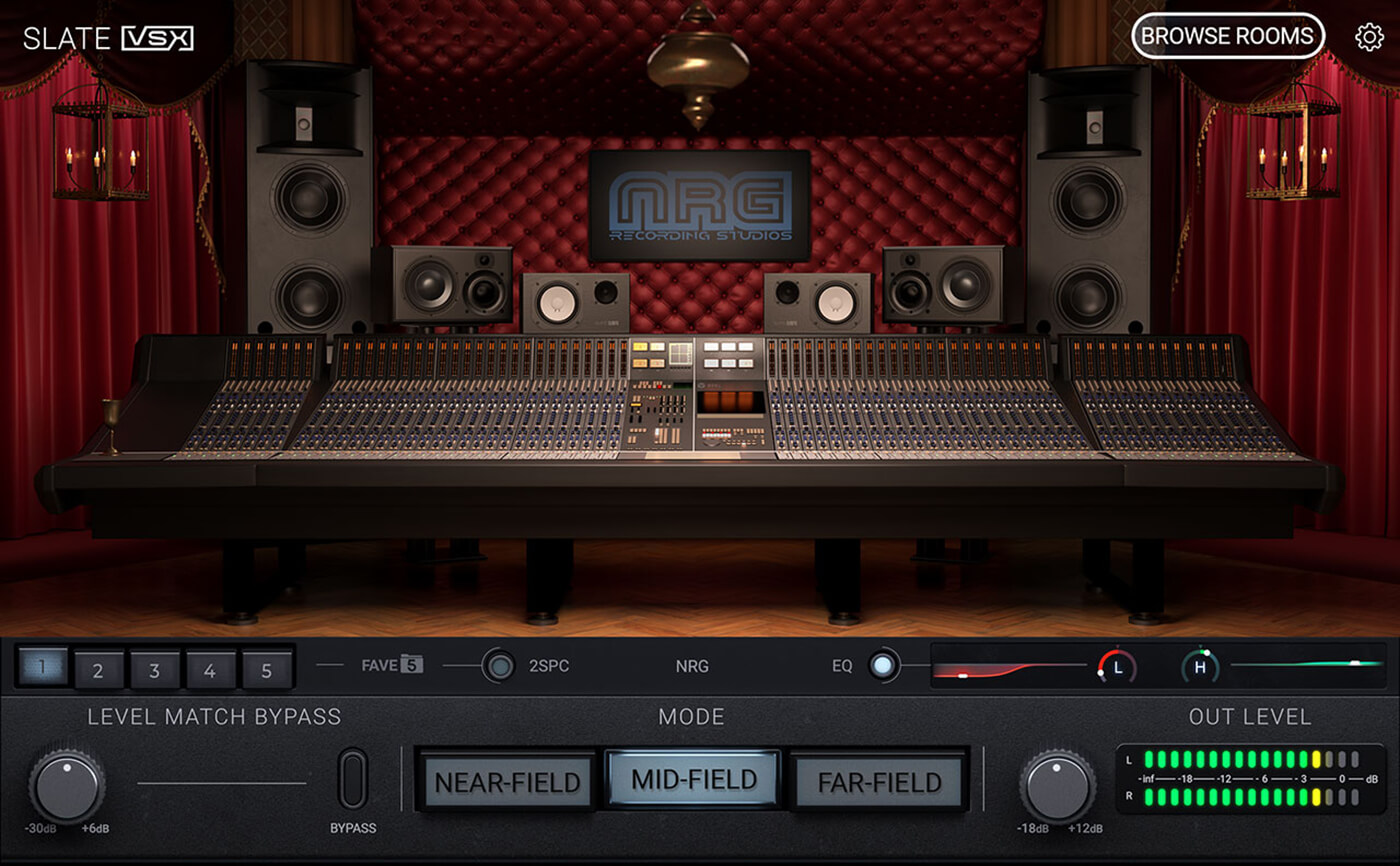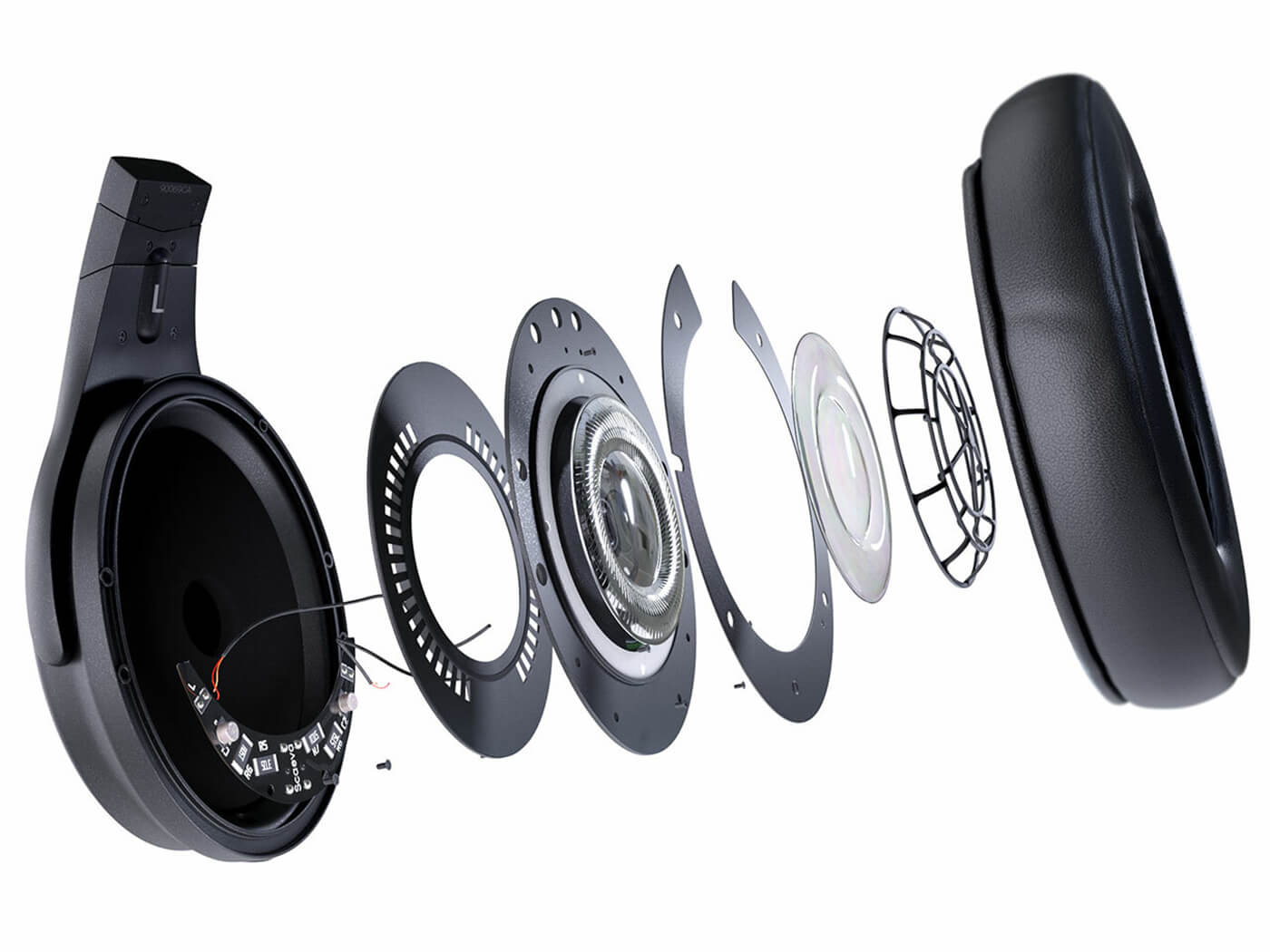Steven Slate Audio VSX 2.0 Headphone System review: virtual 3D environments give you an edge while mixing
Listen to millions of dollars worth of speakers and studios from the comfort of your sofa using Steven Slate’s calibrated headphones and software system.

Review Overview
Our rating
9
Our verdict
⊕ Feels like there are speakers in front of you
⊕ Easy to use GUI with beautiful 3D rendered studios
⊕ Wide variety of rooms and setups to choose from
⊕ Mixing decisions feel easier compared to flat headphones
⊖ Cable feels a bit thin
⊖ Can’t easily run system audio through software
⊖ Can’t use software with other headphones
⊖ Could benefit from displaying more studio and speaker information
A decent set of headphones paired with remarkable sounding software. VSX transports you into a range of 3D spaces to help give you an improved mixing environment.

Price £479/$479 (£430 street), Rent to own option available in US
Contact Steven Slate Audio
We can’t all afford expensive studios and monitoring setups, but VSX from Steven Slate Audio aims to change that via a pair of high-quality headphones and software that model the gear in high-end mixing studios. The headphones have been around since 2020, but a supply shortage meant they were hard to get hold of. Now back in stock, they come packaged with the VSX 2.0 plug-in, boasting several improvements and new studios. But can these headphones live up to the Steven Slate hype and really help you achieve “the best mixes of your life”?
The plug-in can be loaded last your output channel and, thankfully, has the option for automatic bypassing on export. It boasts an attractive GUI, with a variety of 3D studio renderings including Hollywood’s NRG studio, Sonoma Studio, Archon Studio, Howie Weinberg’s Mastering room, and Steven Slate’s perfectly tuned mixing room.
Each virtual space has a mix of near-field, mid-field and far-field monitoring setups, featuring speakers from Barefoot, PMC, ATC, Amphion and more, alongside useful reference monitors like the NS-10s and Auratone Mixcube. In addition, there are two car interiors, an audiophile room, a club dancefloor, a cheap boombox, and five popular headphone models. Should you want to bypass the modeling entirely, you can also opt for the HD-Linear setting, which is the clean and calibrated headphone sound.
When you load the software for the first time, it asks you to select the serial number from a drop down menu with five options, so there is some degree of specific calibration going on, although it’s not on a per headphone basis.

The closed-back headphones sport a high-definition beryllium driver and Acoustic Ported Subsonics for detailed low-end. They feel well-made and durable, and are surprisingly light and smaller than expected. Ultimately, this makes them extremely comfortable, so we can easily imagine mixing in long sessions without issue. We’re not so keen on the included cable though, which is quite thin. But it is removable, should you want to replace it.
The headphones have a frequency response range of 10Hz to 20kHz, and 37 ohms impedance, which is low but could be useful if they’re being driven by a laptop. You also get a quarter-inch, gold-plated adaptor, and a nice, compact carry case.
We compared the sound of the raw (but calibrated) headphones against our set of trusty Beyerdynamic DT-1990s (with Sonarworks calibration), as they sit within a similar price bracket. The DT-1990s had a slightly more spacious and surgical sound, with a little more sub and top end brightness, whereas the VSX felt more punchy around the low-mid kick drum frequencies, and the music sounded a little more gelled together. Accentuating the low and high frequencies using the gentle, integrated 5-band EQ helps to lift the clean headphone sound to our personal preference, and we felt confident it was flat enough to mix with and work as a base setting.

To recreate the realistic-sounding studio rooms, the plug-in uses Steven Slate Audio’s Binaural Perception Modeling algorithms. This involves capturing the rooms using a binaural microphone that reproduces the idiosyncrasies of human hearing, and then fine-tuning all the measurements to fit the specific VSX headphone design. The offshoot of this is that the software can only be used with these headphones, as you can’t switch off the headphone calibration EQ.
When you first listen to the different room setups, the ambience and apparent lack of closeness and definition are a little overwhelming. Our first thought is that we won’t be able to hear things clearly like this. However, the brain and ears are clever, and within minutes the software melts away and we’re in the space listening to the actual speakers.
It’s quite an unusual feeling, but once you get used to the sound, it feels natural and it’s quite remarkable. There is a Depth dial to control the amount of 3D space, but even at the lowest setting, the room sound is still pretty strong. The trick here, as highlighted by a written note when you first open the headphone box, is that you need to spend a decent amount of time within a single environment to get to know it properly. In the same way that you wouldn’t want to tackle an important mix the day after you got some new monitors in the studio, it’s recommended that you acclimatise to a specific room before doing any real work.

It’s hard to review a product like this in full depth, as to fully explore each room setup would require a significant amount of time spent listening and mixing in each environment. With that in mind, we chose to focus on using the Barefoot monitors in Steven’s Mix Room for several mixes, as these had a punchy, full-range sound, whilst still giving a feeling of distance and natural space.
We then flick to the Club room to check the bass definition and use the Boombox and Auratone to check vocal volumes. Each room and speaker setup has its own nuances that can be used to check certain parts of the mix and the overall translation. It’s probably best to limit how many you use though, and for this, there’s a useful quick preset system that lets you save five setups.
There’s also a button called 2SPC (which stands for 2 Second Palette Cleanser) that will add a two-second pause of silence when you flick between presets to let your ears adjust. Other useful features include a Level Match Bypass button that defaults to the clean HD-Linear headphone sound, and an Ear Profile selector with three options, that allows you to subtly adjust the sound to your ear canal size. Unfortunately, there’s no way to route the whole system audio through the software without the use of some sort of third-party plug-in host, which may prove an issue if you’re wanting to calibrate your ears to a specific setup. Also, although there’s info on each studio and speaker set available in the manual, it would be useful if you could display this in the GUI to better help learn what you’re hearing.

We went back and reworked several mixes from scratch and the results were surprising. The top-end and mid-range clarity, in particular, translated noticeably better than the original versions. It was also much easier to mix the low-end using the room simulations over just the clean headphone sound, as balancing the kick and bass felt much closer to how we’re used to hearing it in our studio room. On top of this, judging things like reverb amounts and panning felt a little more natural. This gives us much more confidence in the idea of doing serious mix work remotely when away from the studio.
If your current studio room is less than ideal, then this is a serious alternative that could help you to improve your mixes. We’re looking forward to spending more time using these headphones on future projects to see what effect it has on our mix translation long term. Will this system helps us create the best mixes of our lives? Only time will tell, but the early signs look very promising indeed.
Key Features
- Closed back headphones with HD beryllium drivers
- Simulates over 5m dollars worth of speakers and studios
- Uses Binaural Perception Modeling (BPM) algorithms to recreate 3D spaces
- Acoustic Ported Subsonics (APS) for detailed low-end
- 10Hz to 20kHz, 37 ohms
- Comes with slimline cable, 1/4 inch adaptor and carry case
- Multiple speaker, environment and headphone options
- Level matched bypass and auto bypass on export
- 5-band EQ for subtle adjustments
- 64-bit VST, AU, AAX Native
- Buy: Sweetwater, Thomann